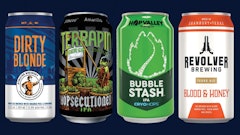
When the U.S. Senate runoff elections in Georgia went democratic on Jan. 6, swinging the majority of the upper chamber, it opened the door for pro-cannabis legislation at the federal level. Prepared to take advantage of the potential of those results, multistate operator Curaleaf executives pulled the trigger to financially position their vertically integrated company by raising roughly $250 million of capital and $50 million through a revolving line of credit. New CEO Joe Bayern, who started his role Jan. 1, says his team wants to accelerate its 2021 projects to keep up with anticipated market growth. Curaleaf operates in 23 states with 96 dispensaries, 23 cultivation sites and more than 30 processing sites. Here, Bayern talks with Cannabis Business Times about raising capital, expectations for the cannabis market and the next wave of growth for Curaleaf.
Tony Lange: What was your reaction to the U.S. Senate runoffs in Georgia, and why did Curaleaf act quickly to raise roughly US$250 million on the Canadian Securities Exchange (CSE)?
Joe Bayern: I think everybody was pleasantly surprised, at least from the cannabis industry, that both of those seats went democratic. Even before the Georgia race, we had filed a shelf prospectus back in November to be able to raise capital if the markets were moving in our favor, and they were. It also allowed us to get some institutional investors into our stock, which is important of us. I think people are now saying it’s time to jump in. We think the Senate race was a catalyst for the industry, and it was just the first step in what we think is going to be a pretty exciting 2021 as far as positive legislation for the cannabis sector.
TL: What are your company goals for growth and expansion in 2021 and beyond?
TL: What other avenues have you used, or plan to use, to position yourself financially to take advantage of the 2021 M&A landscape?
JB: We want to accelerate some of our projects that we had scheduled for the back half of 2021 and the beginning of [2022] because we think the market growth is going to accelerate. We want to be ready for that growth. As we continue to see what we’re calling “a green wave of acceptance,” of consumers accepting cannabis as more mainstream products, we’re going to continue to see increased demand. We want to be prepared to be able to meet that demand. We’re looking at extending capacity through bolt-on acquisitions in a targeted way. And then the next thing is we’re really investing in the next wave of growth, which is predicated on innovation and developing different products backed by science. We can provide a better alternative to what’s in the market today; whether it’s alcohol or whether it’s prescription drugs for things like sleep or chronic pain; cannabis is a better alternative to those products.























